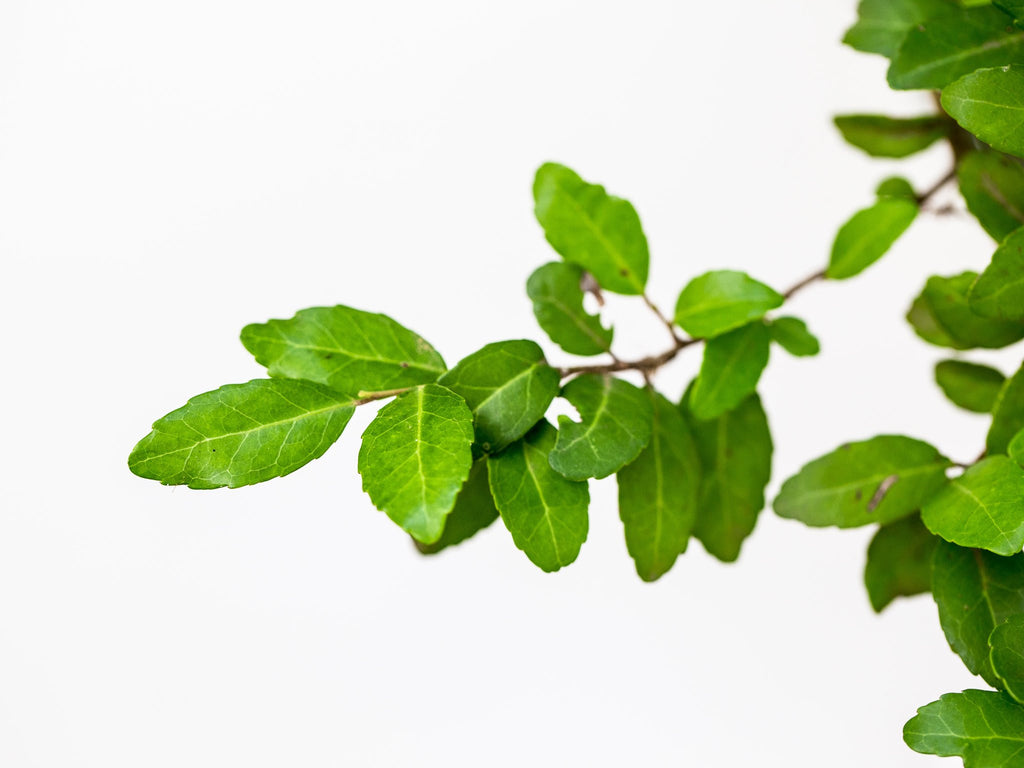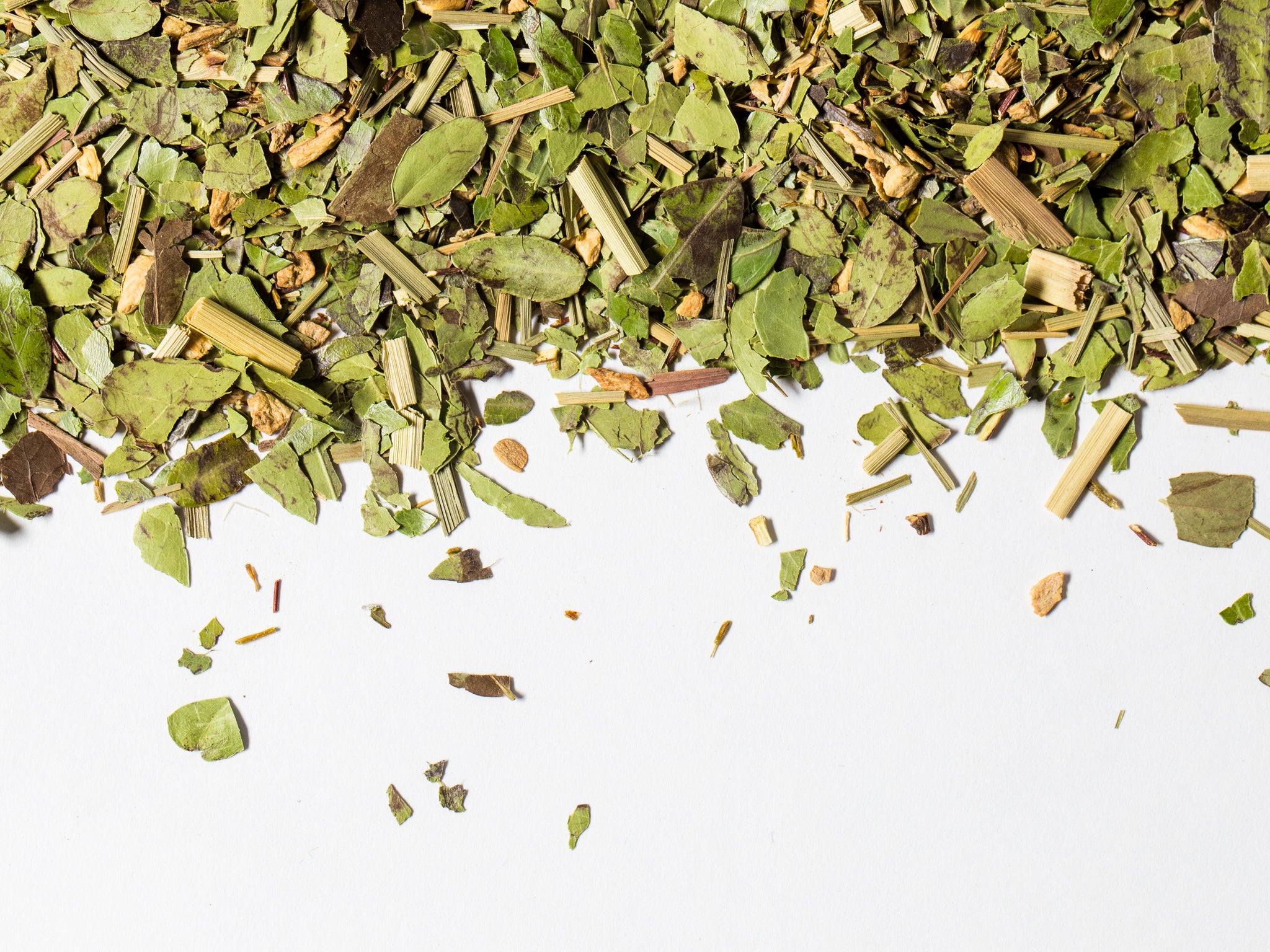For centuries, Native Americans knew what many of us are just now learning: the Yaupon is more than just a source of pretty, emetic berries.
Yaupon: The Forgotten Texas Tree

Across the southern United States, from Texas eastwards to Florida and up to Virginia, a little tree called yaupon has been thriving steadily for centuries. It’s easy to find: yaupon is an evergreen, with small but distinctive leaves and pale gray bark. It grows well in shade or sun, and in hostile soils.

And if you’re having trouble spotting one, you’ll recognize yaupon by the beautiful bright red berries it produces for much of the year. Don’t eat the berries, by the way: they’ll make you sick.

The most interesting characteristic of yaupon isn’t its berries, however. Rather, it’s the fact that among the 20,000+ native plant species in North America, yaupon is the only plant that produces everyone’s favorite stimulant, caffeine.
Given its abundance, combined with the rising popularity of natural foods and herbal teas, you'd think that yaupon-sourced caffeine would be served in tea and coffee shops across the United States. But it's not.

Yaupon, it seems, has been forgotten. While its South American cousins yerba mate and guayusa recently have become popular sources for tea, yaupon has been ignored.

The last Americans to make regular use of yaupon as a food source were Native Americans. “Yaupon” in fact translates from Native languages as simply “the tree.” They used yaupon frequently as a part of pre-battle rituals to give them energy, making a tea known as black drink and consuming it in large quantities.

In modern times, the yaupon receives at least a little attention, but not for its tea-producing qualities. Its attractive red berries help yaupon branches find life each December as Christmas decorations, for example. And landscape architects in south central Texas appreciate that yaupon can be pruned into compliant shapes, need little water, and are generally deer resistant.
But beyond these decorative uses, yaupon is generally ignored.
This is a shame, of course, given that the yaupon’s leaves contain both antioxidants (good for you) and caffeine (good for your energy). Even better, the caffeine is theobromine, a variation of the stimulant that gives you energy without the jitters.

You can help restore dignity to this special tree by spreading the word about it, and of course by brewing some yaupon tea of your own. It's easy to make, if not a little time consuming. Simply air dry the leaves by hanging a branch or two indoors for several weeks, and they'll eventually fall and give you the dried ingredients to brew. Easier yet, you can order one of the few commercially harvested yaupon teas; we recommend these, hand-harvested in Cat Spring, Texas.
-N4SJ

Comments
Stim Wilcox:
I’ll add another use of yaupon, rather different from others I’ve seen. I am a bowyer, in that I make wooden bows and arrows. (I wrote a book called The Art Of Making Selfbows — bows with no laminations in the limbs —and sell bows, teach workshops in making bows, etc.) When visiting in lower Alabama, I found that young yaupon trees makes excellent bows (and arrow shafts in young sprouts). Though some of you might use the wood for making bows, as well as other uses.
Aug 20, 2019
Bety Beavert:
The trunks of my yaupon trees are looking a splotched grey. Is this a disease?
Jul 15, 2018
Nancy G Coryell:
Do yaupon produce round geen balls the size of a large marble? My tree looks like a yaupon, but does not have berries.
Jul 15, 2018
Mary Alice Cassel :
One of my sweetest childhood memories was my daddy and mother taking us into the wooded area where we lived in Calhoun County in Texas. Daddy had a sharp axe and a sharp eye for spotting the best shaped yaupon and cutting it down and taking it to our home where it became the prettiest Christmas any child could wish for. It was already decorated with beautiful tiny red berries and we added garland of strung pop corn and tiny tin candleholders for candles that we clipped onto the branches. It was only lit on Christmas morning as we opened our gifts.
I never knew until I researched through Google some 80 years later that our beautiful little Christmas tree had a use other than providing our childhood with memory so amazing that I will always cherish.
8/25/2017
Aug 25, 2017
Erik :
This stuff is everywhere in the south and I have spent many days slashing through its thick thickets doing forestry plots, never realised it’s history, caffeine or antioxidant content.
May 20, 2017
Erik Klassen :
This stuff is everywhere in the south and I have spent many days slashing through its thick thickets doing forestry plots, never realised it’s history, caffeine or antioxidant content.
Jul 15, 2018
Jason Ellis:
Beautiful photos and nice article. A little correction though. Theobromine isn’t a type of caffeine. Caffeine and theobromine are different xanthine alkaloids. Yaupon contains both of them. It contains less caffeine than coffee or traditional tea, yet much more theobromine. Theobromine doesn’t affect the central nervous system as much as caffeine but has a much longer half life, meaning that while the caffeine from the yaupon is tapering off the theobromine is still working. Theobromine translates from Greek as “Food of the Gods” and is the mood elevator found in chocolate!
I’m Jason, one of the founders of Lost Pines Yaupon Tea (lostpinesyaupontea.com), another company bringing yaupon back!
Hugh,
Only the females have berries, so yes, there are types without berries! They do bloom with very small white flowers.
Aug 24, 2016
Hugh:
We have lived in Austin for 15 years and have several yaupon trees around our yard. In all those years they have never produced a single berry. They do bloom annually with sweet smelling petite white blossoms. Are there other varieties than the type with berries?
Jul 13, 2016
Judy Wood:
What an interesting article! As I have a small percentage Native American bloodline….I’m only now truly appreciating our natural landscapes and how wonderfully thankful for people who have researched their heritage.
Thank You!
Judy
May 16, 2015
Talwinder:
I can’t imagine ginivg up black tea (that’s my caffeine source). You’re a braver soul than me, Trace. I do enjoy using lemon balm in tea though so if you can find some, add that to your mint mix for some citrus zing. Rather curious about this holly possibility. Do tell if you give it a try.
Mar 27, 2015
Leave a comment